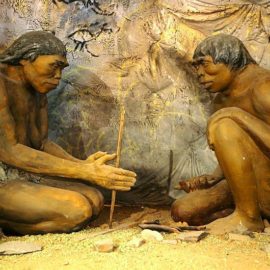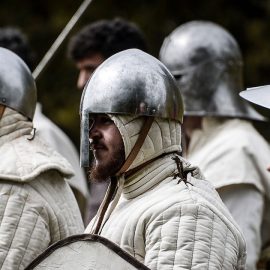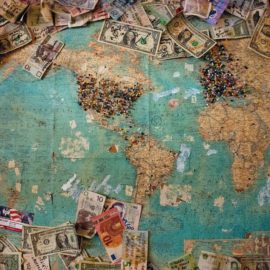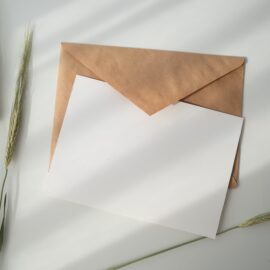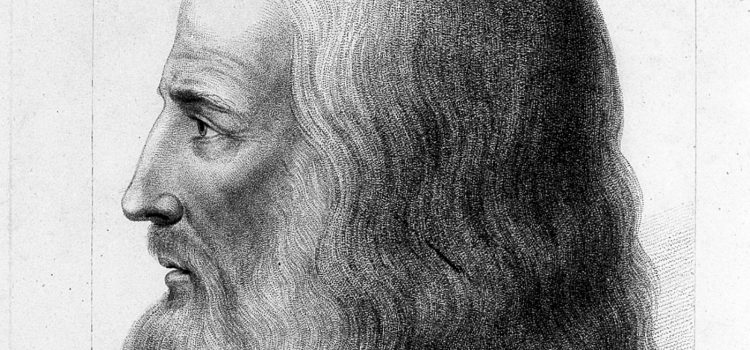
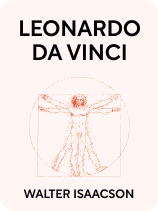
This article is an excerpt from the Shortform book guide to "Leonardo da Vinci" by Walter Isaacson. Shortform has the world's best summaries and analyses of books you should be reading.
Like this article? Sign up for a free trial here.
What was Leonardo da Vinci’s early life like? What made Leonardo stand out from his peers?
According to Walter Isaacson in the biography of the polymath, Leonardo da Vinci was well-liked by his peers. This doesn’t mean he was like them, as he had many different qualities that allowed him to become a genius.
Let’s look at the early life of Leonardo da Vinci to get a better sense of him.
Leonardo da Vinci’s Early Life (1452-1464)
Leonardo was born in Vinci, Italy, on April 15, 1452. He lived there for the first 12 years of his life, alternating between his mother’s home and his paternal grandparent’s home. (Shortform note: Historians say that Leonardo was more specifically born in Anchiano, a village near the town of Vinci.)
Born to Stand Out
According to Isaacson, throughout his early life, Leonardo da Vinci was popular and widely liked. He was handsome, stylish, and made friends easily. He expressed himself through his clothes and had a preference for short, pink robes. He was generous and uninterested in money. Leonardo worked just enough to support himself and spent the rest of his time investigating subjects that interested him.
(Shortform note: According to the 5-factor model of personality, Leonardo was very open (which allowed him to learn and create without limitations), moderately conscientious (which made him distracted and prone to procrastination), very extroverted (which made him friendly and outgoing), highly agreeable (which made him charming), and moderately neurotic (which led him to often feel unsatisfied with his work).)
Despite being popular, Leonardo was different from his contemporaries, which gave him the freedom to become the genius he was. Isaacson identifies four key differences between Leonardo and his peers:
1. He was an illegitimate son. Leonardo was born out of wedlock, which Isaacson claims had some advantages: His uncertain social and financial status freed him to follow his career and education with independence and boldness. (Shortform note: The Renaissance was a golden age of illegitimacy in Italy because men wanted to ensure they would have an heir.)
2. He was left-handed. Isaacson says Leonardo learned to write from right to left so that he wouldn’t smudge the ink with his hand. Using his left hand also made his brush strokes unique. (Shortform: Scientists have analyzed some pages of Leonardo’s notebooks and concluded that he was likely ambidextrous but used his left hand more often than his right.)
3. He was gay. And he didn’t hide it, despite sodomy being illegal. In his art, male nudes were lovingly depicted with much detail, while his portraits of women had psychological insight rather than anatomical detail. (Shortform note: Many pop culture representations of Leonardo don’t address his sexuality. Perhaps this will change in the movie adaptation of Isaacson’s biography.)
4. He was a vegetarian. According to Isaacson, Leonardo loved animals and hated how they were treated. He dressed in plant-based fabrics, avoided killing insects, and bought caged birds to set them free. However, his love of animals didn’t get in the way of his scientific pursuits. He once opened up a pig whose heart was still beating to see how the ventricles worked. (Shortform note: Leonardo’s vegetarianism might have been part of a broader pacifist philosophy. Some argue that his designs for weapons never came to life because he couldn’t bring himself to create tools for destruction. However, the fortresses he designed for his patrons did end up being used. Perhaps he felt that fortresses were a force for peace rather than war.)

———End of Preview———
Like what you just read? Read the rest of the world's best book summary and analysis of Walter Isaacson's "Leonardo da Vinci" at Shortform.
Here's what you'll find in our full Leonardo da Vinci summary:
- A detailed look into the life, accomplishments, and struggles of Leonardo da Vinci
- Lessons from his life and work that you can apply to your own life
- What set Leonardo apart from other artists at the time

